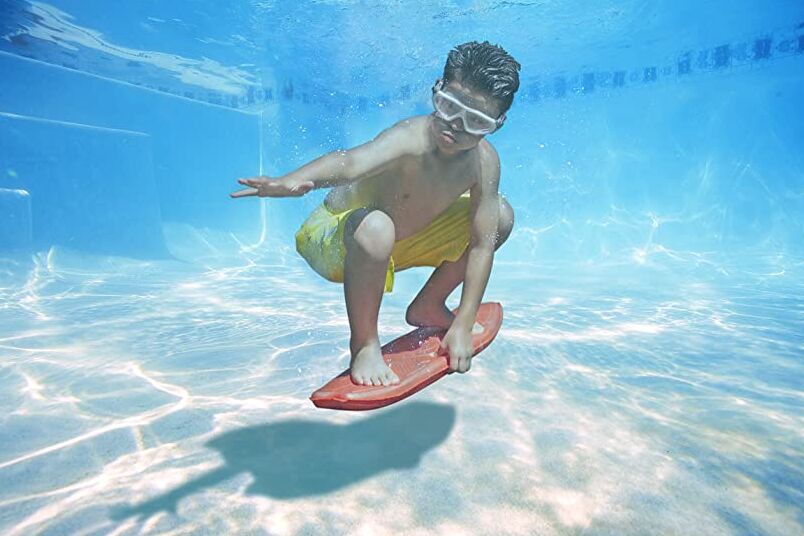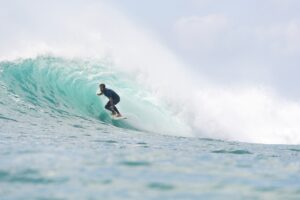Can I Learn Surfing if I Can’t Swim?

Are you intrigued by the idea of riding waves and experiencing the thrill of surfing, but you’re not sure if you can learn without knowing how to swim? In this article, we will explore the importance of swimming for surfing, the risks of surfing without swimming skills, and tips for learning to surf safely if you can’t swim. We will also discuss the benefits of learning to swim for your surfing journey.
The Importance of Swimming for Surfing
The Role of Swimming in Surfing
Swimming is a fundamental skill for surfing, as it enables you to navigate the ocean, maintain your balance on the board, and handle emergencies. Strong swimming skills can help you to stay afloat in challenging conditions and improve your overall surfing experience.
Building Confidence in the Water
Knowing how to swim can give you the confidence you need to face the ocean waves. This confidence allows you to focus on your surfing technique, rather than worrying about your safety in the water.
Risks and Dangers of Surfing Without Swimming Skills
Potential Drowning Incidents
Surfing without the ability to swim is dangerous and could lead to drowning. Surfing often takes place in deep water, and you may be separated from your board during a wipeout. In such situations, knowing how to swim is crucial for your safety.
Increased Difficulty in Handling Emergencies
If you’re unable to swim, it becomes more difficult to handle emergencies, such as a rip current or an injured friend. With strong swimming skills, you’ll be better equipped to navigate these situations and stay safe in the water.
How to Start Learning to Surf if You Can’t Swim
Understanding Your Limits
First, it’s essential to understand your limitations and recognize that surfing without swimming skills poses significant risks. Before attempting to learn to surf, consider taking swimming lessons to build your confidence and abilities in the water.
Taking Swimming Lessons
Swimming lessons are an invaluable investment for aspiring surfers who can’t swim. These lessons will teach you essential swimming techniques and help you feel more comfortable in the water. Many swimming instructors also offer specialized classes for surfers.
Utilizing a Personal Floatation Device
Wearing a personal floatation device (PFD) can provide some buoyancy and support in the water. While a PFD is not a substitute for swimming skills, it can offer some assistance as you learn to surf.
The Fundamentals of Surfing
*Learning Surfing Basics on Land*
Before heading into the water, practice the basics of surfing on land. This includes understanding the parts of the surfboard, learning how to properly position yourself on the board, and practicing the pop-up technique.
Practicing Balance and Paddling
Balance and paddling are essential skills for surfing. Begin by practicing balance on a stable surface, such as a balance board or a yoga mat. Once you feel comfortable with your balance, practice paddling techniques on land or in a swimming pool.
Catching Waves
As you become more confident in your swimming and surfing skills, you can start catching waves. Start with small, gentle waves and gradually progress to larger ones as your abilities improve.
Building Confidence in the Water
Gradual Exposure to Water Environments
To build your confidence in the water, start by gradually exposing yourself to different water environments. Begin in a swimming pool, then move on to calmer beach conditions before attempting to surf in the ocean.
Developing Water Safety Skills
Learn essential water safety skills, such as treading water, floating, and identifying rip currents. These skills will help you stay safe in the water and improve your overall surfing experience.
Surfing Safety Tips
Always Surf with a Buddy
Surfing with a friend or experienced surfer can provide valuable support and guidance, particularly if you’re not a strong swimmer. They can offer assistance in case of emergencies and help you navigate challenging situations.
Choose the Right Surf Spot
Select a surf spot that is appropriate for your skill level and swimming abilities. Look for areas with smaller waves, lifeguard presence, and a sandy bottom to minimize potential risks.
Use the Right Equipment
Having the proper equipment, such as a well-fitting wetsuit, a leash, and a suitable surfboard, can make your surfing experience safer and more enjoyable.
The Benefits of Learning to Swim for Surfing
Improved Water Confidence
As you develop your swimming skills, your confidence in the water will increase. This confidence will translate into a better surfing experience and a reduced risk of accidents.
Enhanced Surfing Skills
Strong swimming skills can help you improve your surfing abilities by allowing you to maintain better balance on the board, paddle more efficiently, and navigate challenging conditions.
Overall Health and Fitness
Swimming is a fantastic full-body workout that improves cardiovascular health, builds muscle strength, and promotes flexibility. These benefits can enhance your overall fitness and contribute to a more enjoyable surfing experience.
Conclusion
While it is possible to learn to surf without knowing how to swim, it poses significant risks and is not recommended. Developing strong swimming skills will not only make surfing safer but also more enjoyable and rewarding. By following the tips provided in this article, you can safely and confidently embark on your surfing journey.
FAQs
- Do all surfers need to know how to swim? While not all surfers are expert swimmers, it is highly recommended that surfers have at least basic swimming skills for their safety and comfort in the water.
- Can I learn to swim and surf simultaneously? Yes, you can work on developing your swimming skills alongside learning to surf. However, it’s essential to prioritize safety and ensure you’re confident in your swimming abilities before attempting to surf in challenging conditions.
- Is it possible to surf in shallow water? Some surf spots have shallow water and smaller waves, which may be more suitable for beginners or those with limited swimming abilities. However, always exercise caution and ensure you’re familiar with the water conditions before surfing.
- What kind of swimming skills are most important for surfing? For surfing, it’s essential to have a strong freestyle stroke, as well as the ability to tread water, float, and navigate currents. Developing these skills will help you stay safe and confident in the water while surfing.
- How long does it take to become a competent swimmer for surfing purposes? The amount of time it takes to become a competent swimmer varies depending on individual ability, frequency of practice, and the quality of instruction. It’s essential to focus on developing strong swimming skills before attempting to surf in challenging conditions.





